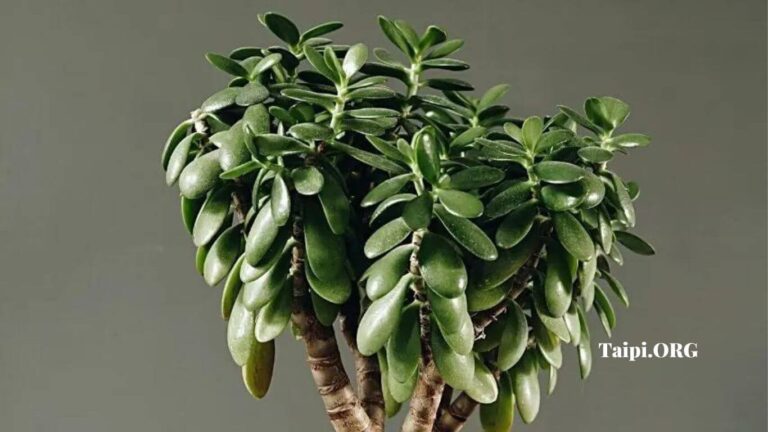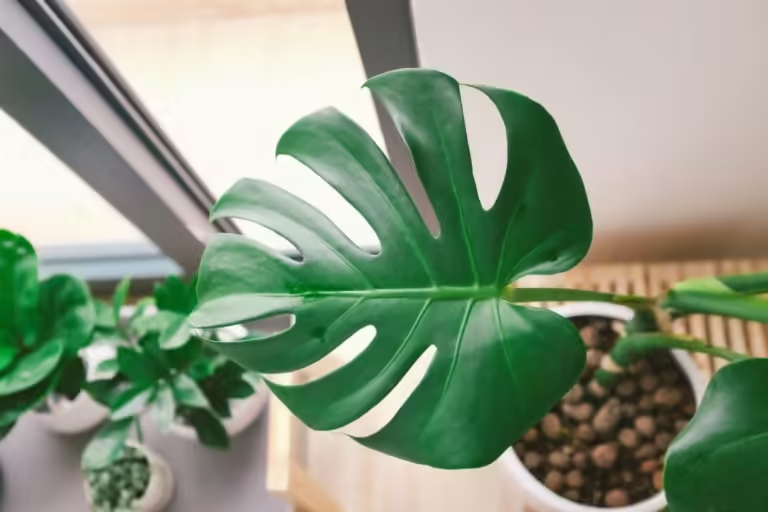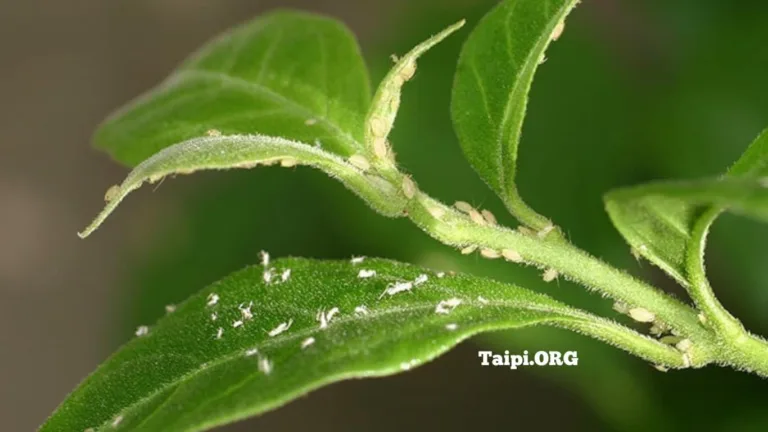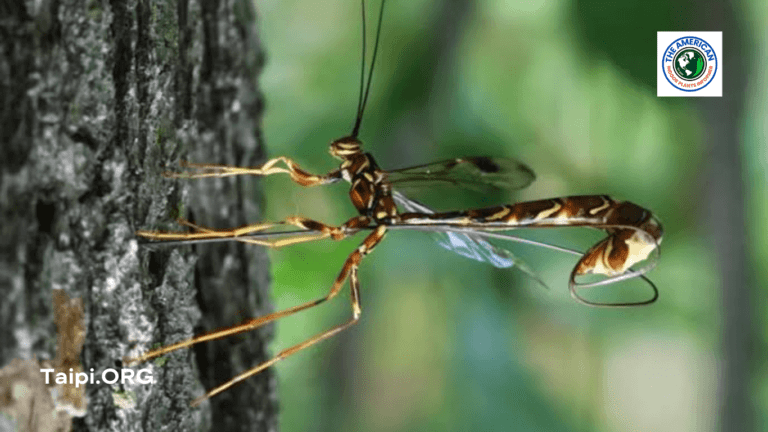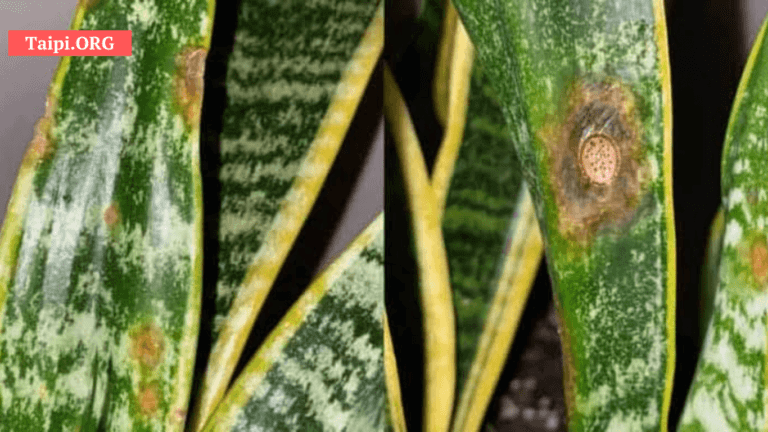Underwatered ZZ Plant: 9 Signs to Watch For + How to Revive Your Zanzibar Gem
YOU love your ZZ plant so much that you feel you need to water it every time you get an opportunity, right? According to you, it’d be unthinkable for your ZZ plant to appear dehydrated while you are there. You are thinking right. However, did you know that you could be suffocating your ZZ plant with a lot of water? In case you didn’t know, I am here to show you the signs of an underwatered ZZ plant.
Dry soil, drooping and yellowing of leaves, and brittle stems are some of the common signs of an underwatered ZZ plant.
But these are not the only signs. Before I go into that, let’s talk about the triggers.
Compare: Signs of Underwatered Snake Plant
What Triggers Dehydration in ZZ Plants?
Indications of under-watering are evident in an indoor potted ZZ plant more than an outdoor plant. And it is easier to notice an overwatered ZZ plant than an underwatered one.
Your ZZ plant is a vibrant organism reliant on water to synthesize its nourishment, engaging in the exchange of air as it breathes in and exhales the surrounding atmosphere.
Through the process of photosynthesis, sunlight collaborates with water and oxygen to produce sugars.
Subsequently, these sugars fuel its growth, and the plant releases water as vapor, along with other gases, during transpiration.
However, if your ZZ plant is experiencing dehydration, it’s likely due to a discrepancy between the water supply entering its pot and the amount required to sustain these vital processes.
Neglecting to provide adequate water can impede its growth and lead to its eventual demise.
You Might Also Like: Overwatered Snake Plant: 5 Telling Signs
9 Signs of an Underwatered ZZ Plant
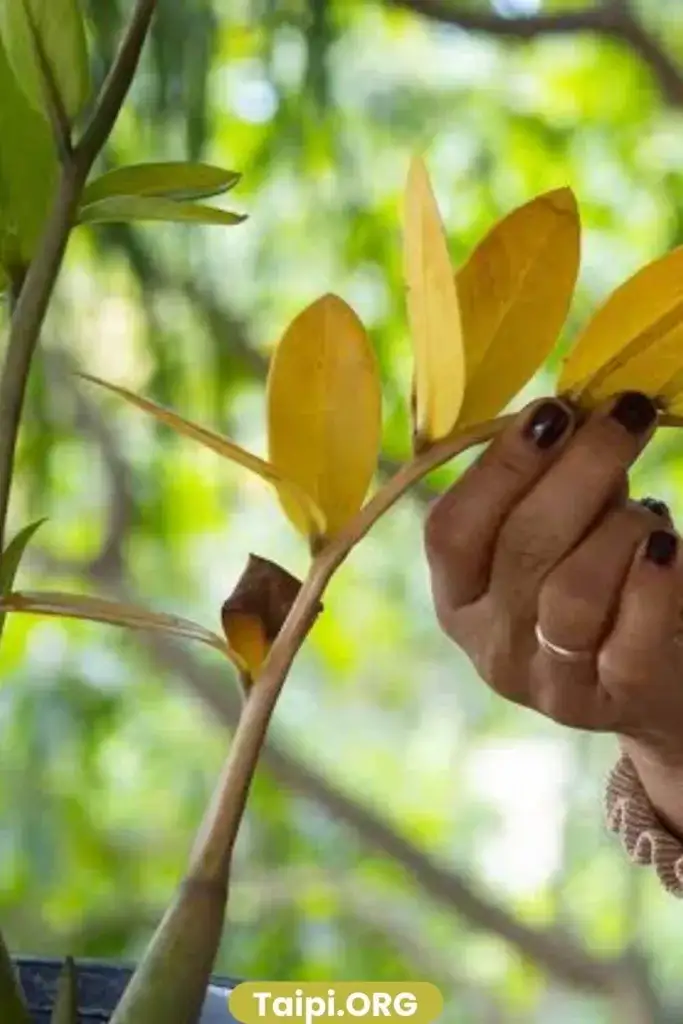
Now, let’s talk about the telling signs of an underwatered ZZ plant.
1. Yellowing Leaves
One of the earliest signs of underwatering in a ZZ plant is the appearance of yellow leaves. The natural dark green color of the leaves should be maintained, so any deviation toward yellow indicates a potential issue. This discoloration can occur uniformly across the plant or affect specific leaves.
2. Drooping or Wilting
Underwatered ZZ plants may exhibit noticeable drooping or wilting. The leaves, which are typically firm and upright, will appear limp and lose their usual turgidity. This is a clear visual indicator that the plant is not receiving enough water.
3. Dry Soil
Dry topsoil is another telling sign that your ZZ plant is suffering from underwatering practice.
Regularly check the soil moisture level as dry soil is a clear sign of underwatering.
Generally, ZZ plants prefer evenly moist soil, so if the top layer feels dry to the touch, it’s time to provide adequate water. Ensure that water reaches the root zone during each watering session.
4. Slow Growth
Insufficient water can slow down the growth of a ZZ plant. If you notice that your plant is not producing new shoots or leaves at the expected rate, it may be an indication that it requires more water.
Healthy ZZ plants typically exhibit robust growth.
5. Crispy or Brown Edges
Underwatered ZZ plants often display crispy or brown edges on their leaves. This occurs because the plant, in response to water scarcity, reallocates resources and nutrients away from the leaf margins. If you notice this browning, it’s crucial to adjust the watering routine.
6. Leaf Drop
In severe cases of underwatering, ZZ plants may initiate leaf drop as a survival mechanism. This is a last-ditch effort to conserve water. If you observe a significant loss of leaves, take immediate steps to rehydrate the plant.
7. Lack of New Growth
An underwatered ZZ plant may show a lack of new growth. Healthy ZZ plants consistently produce new shoots and leaves. If your plant appears stagnant and isn’t generating fresh growth, it may be an indication of water deficiency.
8. Brittle Stems
The stems of an underwatered ZZ plant may become brittle and easily snap. Healthy stems should be pliable and firm. Brittle stems suggest a lack of internal water pressure, compromising the plant’s structural integrity.
9. Shriveled Bulbs or Rhizomes
ZZ plants store water in their bulbs or rhizomes. If these structures appear shriveled, it signals a significant lack of water. Adequate hydration is crucial to maintaining the health and vitality of these storage organs.
How to Revive an Under-watered ZZ Plant
Thankfully, under-watering your ZZ plant isn’t a major issue. You can easily reverse the situation and grow a healthy plant indoors. Do the following to revive your favorite Zanzibar gem.
Remove Severely Damaged Leaves
Start by delicately trimming away damaged leaves using sharp, clean shears. Chop off any yellowed leaves, allowing your ZZ plant to focus on regrowth.
Consider Your Soil and Pot
Evaluate the quality of your soil and pots. While good drainage is essential, excessive drainage can be problematic. If your mix is not retaining water, consider re-potting.
Plant your Zuzu plant in a pot around the same size with good drainage and choose a mix with equal parts soil, peat moss, and perlite.
Water From Bottom
After the necessary trimming and re-potting, it’s time to water. The most effective method is watering from the bottom. Place your plant in a tray, fill it with filtered water, and let your ZZ absorb water through the roots.
Add more water as needed and wait before removing the plant.
Water from Top
Another simpler method is to water the plant from the top. Place your plant in a saucer, and slowly pour distilled or filtered water into the soil, ensuring it drains out. Allow the plant to rest before returning it to its home.
Find a Good Location for Your ZZ Plant
Protect your Zamioculcas from direct sunlight, heaters, and air conditioner drafts to prevent moisture loss and stress.
Set Up and Follow the Watering Plan
Establish a watering routine to avoid future under-watering. Set reminders on your phone calendar or incorporate plant-checking into your weekly routine. Check the soil moisture level before watering.
How Often to Water Your ZZ Plant
ZZ plants thrive with minimal water. Water once every week or two, adjusting based on factors like season, plant size, and environmental conditions.
Season
Consider the growing season as you may need more water during spring and summer. Adjust watering frequency during fall and winter when growth slows.
Plant Size
Larger ZZ plants and pots may require more water. So, tailor your watering routine accordingly.
Temperature and Humidity
Be mindful of temperature and humidity. High humidity reduces water loss, while dry environments increase it.
Underwatered ZZ Plant FAQs
Q: How often should I water my ZZ plant, and what’s the best watering routine to prevent underwatering?
A: ZZ plants prefer to dry out between watering sessions. Water the plant thoroughly when the top inch of the soil feels dry. Be sure to allow excess water to drain away, and never let the plant sit in standing water. Adjust the frequency based on factors like room temperature, humidity, and the specific conditions of your plant’s environment.
Q. Can I revive an underwatered ZZ plant, and what steps should I take to restore its health?
A: Yes, you can revive an underwatered ZZ plant with prompt and proper care. Start by giving the plant a thorough watering, making sure water reaches the root zone. Trim any severely damaged or yellow leaves. Increase the humidity around the plant and provide filtered or indirect light. Monitor the plant closely for signs of recovery.
Q: How can I tell if my ZZ plant is underwatered or overwatered?
A: Underwatered ZZ plants typically display signs such as yellowing leaves, wilting, and dry soil. On the other hand, overwatered ZZ plants may show symptoms like mushy, blackened stems, and yellowing leaves with a waterlogged appearance. Assessing the moisture level of the soil, the plant’s overall appearance, and specific leaf conditions can help determine if it’s underwatered or overwatered.
Q: Is it normal for ZZ plants to drop some leaves, or does leaf drop always indicate underwatering?
A: While ZZ plants are resilient, they may shed a few older leaves as part of their natural growth cycle. However, if you notice a significant and sudden loss of leaves, it could be a sign of stress, and underwatering is a common cause. Evaluate the overall health of the plant and adjust your watering routine accordingly.
Q: Can I use a moisture meter to determine if my ZZ plant needs water?
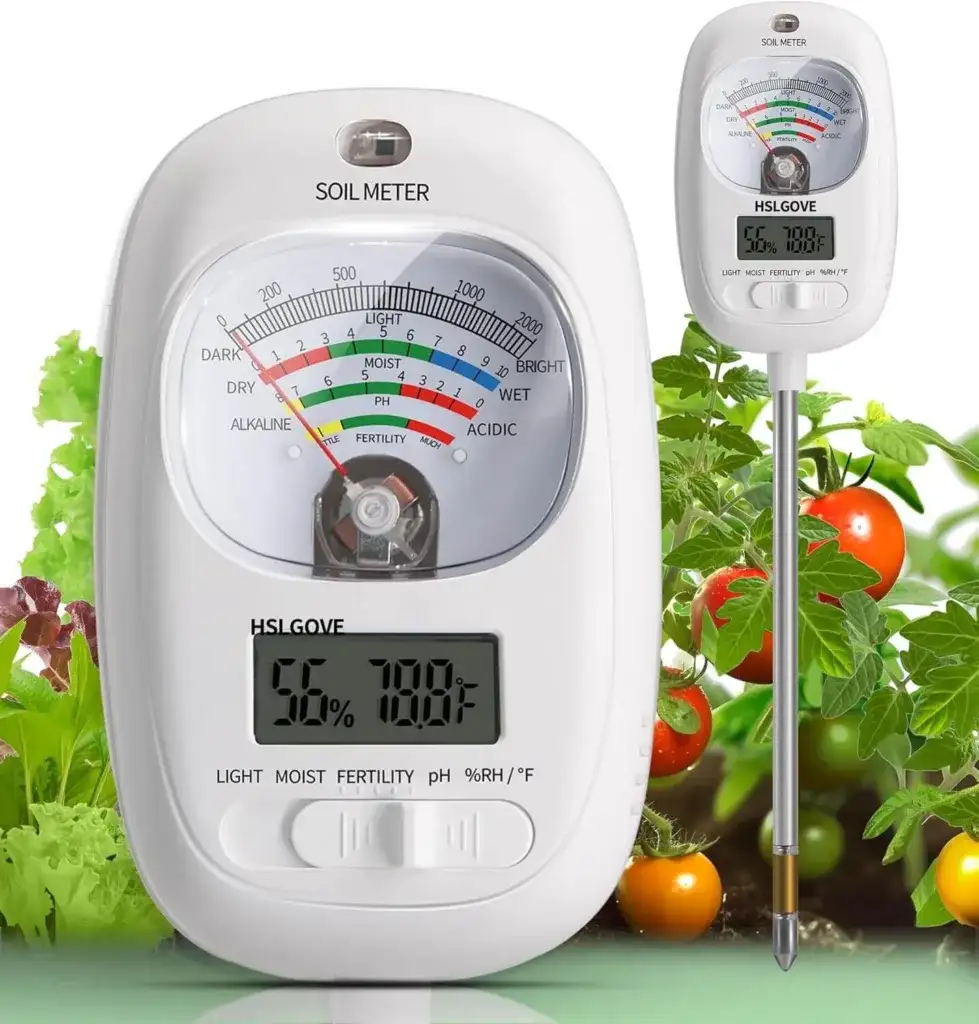
A: Yes, a moisture meter (pictured ⬆) can be a helpful tool to gauge the soil moisture level. Insert the meter into the soil, and it will provide a reading indicating whether the soil is dry, moist, or wet. However, it’s essential to supplement this with visual cues from the plant itself. The moisture meter can serve as a useful backup to ensure accurate watering, but always consider the overall condition of the ZZ plant.
Concluding Words on Underwatered ZZ Plant
ZZ plants are resilient survivors. If your ZZ plant has dried out, follow the above steps for revival. Keep a watchful eye on water levels, and your underwatered ZZ plant will soon regain its glossy vibrancy, providing years of joy with just a bit of water every week or two.



